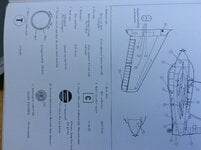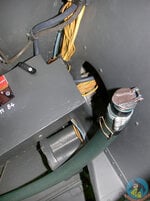That is most likely to be due to the fact, that the USSR did not have any jets by the end of WW2, not even experimental.The Soviets used similar (possibly the same) colour coding as it seems is in the 163. Should be a start for identification.
The basis for jet technology in the USSR are form the germans as large companies involved in the jet development like Junkers and BMW fell into the hands of the Russians. The JUMO 004 was developed futher to increace trust and performance, so was the BMW 003. All engineers and technicians were germans. Production was going already by the end of 1945.
The TA183 under development was also taken by the russians and probably developed into the MIG-15
Regards
Mikael


